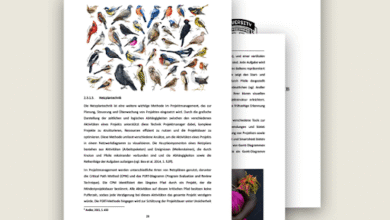What Was Your Strategy While Preparing for Current Affairs?

Introduction
When it comes to competitive exams—be it UPSC, APPSC, TSPSC, SSC, or Banking—Current Affairs is a crucial and often scoring section. Many aspirants struggle to find a clear-cut strategy that works for them. At HAREESH THE BEST ACADEMY, we believe preparation for current affairs requires smart planning, consistency, and the right sources. In this blog, we break down a tested strategy that has helped hundreds of our students stay ahead of the curve in current affairs.
Why Are Current Affairs So Important?
Before diving into the strategy, it’s important to understand the role current affairs play in competitive exams:
-
Dynamic Section: It reflects recent national and international events.
-
High Scoring: With proper preparation, students can score full marks in this section.
-
Real-World Application: Helps in essays, interviews, and group discussions.
-
Integrated with Other Subjects: Especially in UPSC and State PSCs, where current events are tied with Polity, Economy, and Environment.
Strategy to Prepare for Current Affairs
At HAREESH THE BEST ACADEMY, our experts have designed a systematic and practical approach to tackle current affairs preparation effectively. Here’s a step-by-step breakdown:
1. Stick to Limited and Reliable Sources
One of the biggest mistakes students make is referring to too many sources. We suggest the “one source, multiple revisions” rule. Here’s what we recommend:
-
Newspapers: The Hindu or Indian Express – Read daily without fail.
-
Monthly Magazines: Vision IAS, Drishti, or Hareesh Academy’s own curated monthly compilations.
-
Government Websites: PIB (Press Information Bureau), PRS India, RBI, and Ministry portals for authentic updates.
-
Mobile Apps: Use trusted apps like Insights IAS, GKToday, or HAREESH ACADEMY’s own Current Affairs app for daily quizzes and updates.
2. Daily Reading and Note-Making Habit
Discipline is the key. Set aside 60–90 minutes every day exclusively for current affairs.
-
Read the newspaper thoroughly, focusing on editorials, government schemes, international relations, and economic developments.
-
Make short notes topic-wise instead of date-wise. For example:
-
Environment: COP summits, climate goals.
-
Science & Tech: ISRO missions, new vaccines.
-
Government Schemes: PM Vishwakarma Yojana, Jal Jeevan Mission.
-
Using tools like Evernote, Notion, or traditional notebooks helps in long-term retention.
3. Weekly and Monthly Revisions
Revision transforms short-term memory into long-term knowledge.
-
Weekly Revision: Dedicate Sunday to revising everything you’ve read that week. Use Hareesh Academy’s weekly quiz or test series for reinforcement.
-
Monthly Compilation: Go through the monthly magazine or notes for comprehensive review. Highlight important facts during the first revision itself.
This layered approach ensures that by the end of the year, you’ve revised key facts multiple times.
4. Practice Through Quizzes and Tests
Practice is non-negotiable. The more you test yourself, the better your recall.
-
Take daily quizzes on apps or from Hareesh Academy’s online portal.
-
Attempt weekly current affairs tests and mock exams.
-
Join monthly current affairs test series at the Academy to stay exam-ready.
It’s important not just to read but also to practice MCQs and analyze why you got an answer right or wrong.
5. Integrate With Static Syllabus
Current affairs are not isolated. For instance:
-
A question on COP28 might require understanding of Kyoto Protocol or Paris Agreement.
-
News about RBI’s policy might relate to Monetary Policy in the Economy section.
At HAREESH THE BEST ACADEMY, our faculty trains students to interlink static and dynamic portions, which is a crucial skill for exams like UPSC, APPSC, and TSPSC.
6. Focus on Relevance, Not Volume
It’s easy to get overwhelmed with information. Remember, not everything in the news is important for the exam. Learn to filter:
-
Focus on events with national or international significance.
-
Skip detailed political controversies, celebrity news, or sensational stories.
-
Prioritize government schemes, constitutional amendments, economic data, and important days/events.
HAREESH THE BEST ACADEMY provides daily “What to Read and What to Skip” guidance through our internal Current Affairs Mentorship Program.
7. Use Visual Aids: Mind Maps, Tables, Flashcards
Current affairs involve facts and figures. Use tools like:
-
Mind maps for summarizing editorials.
-
Tables for schemes and comparisons.
-
Flashcards (digital or physical) for revising government schemes and personalities.
Visual learning boosts memory and helps during quick revisions before the exam.
8. Stay Consistent for at Least 12 Months
For most major exams, 1 year of current affairs is the golden rule.
-
For UPSC: From May of the previous year till April of the exam year.
-
For Banking/SSC: Last 6–8 months is usually enough.
-
For APPSC/TSPSC: 8–12 months is ideal.
HAREESH THE BEST ACADEMY provides a 12-month Current Affairs Calendar to ensure students cover the entire range in a structured manner.
9. Join a Guided Program or Mentorship
Self-study is important, but structured coaching can streamline your efforts. We offer:
-
Daily current affairs classes (online/offline).
-
Weekly live quizzes and discussions.
-
Editorial analysis sessions.
-
Doubt-solving and peer discussion groups.
Our students have consistently ranked high in multiple exams thanks to this personalized mentorship.
Final Thoughts
This article in the theglobalnewz must have given you clear idea about Current affairs preparation is not about reading everything—it’s about reading the right things in the right way. At HAREESH THE BEST ACADEMY, our goal is to make students not just exam-ready, but aware and informed citizens.
If you’re serious about acing the current affairs section, start early, stay consistent, and revise often. With our proven strategy, expert guidance, and structured material, success is not just possible—it’s inevitable.
Join HAREESH THE BEST ACADEMY today and let us guide your journey towards success—one current affair at a time.








